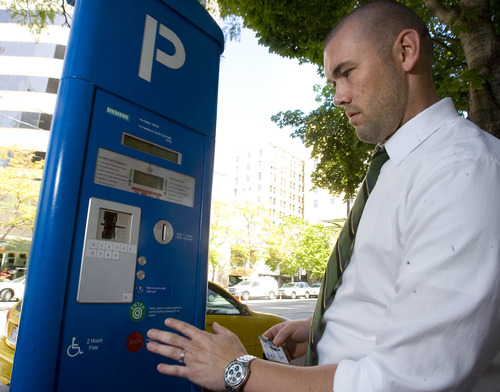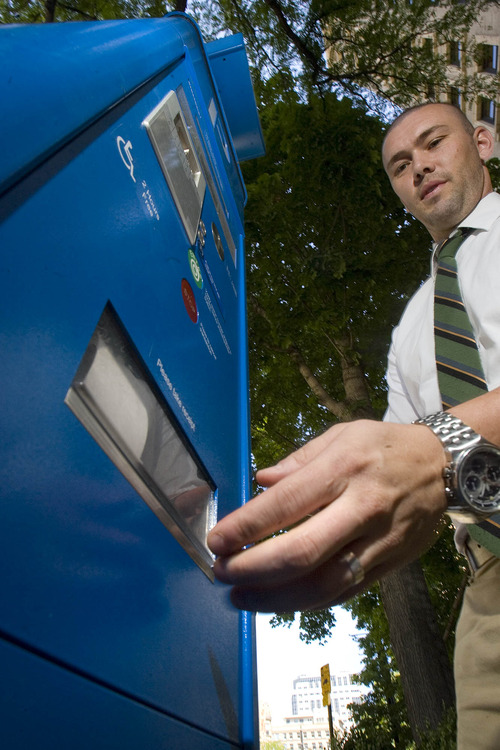This is an archived article that was published on sltrib.com in 2014, and information in the article may be outdated. It is provided only for personal research purposes and may not be reprinted.
A significant downturn in projected parking revenues apparently has little to do with the notion that many Salt Lakers — and others — simply detest the blue curbside parking kiosks downtown.
Salt Lake City Mayor Ralph Becker's office has forwarded to the City Council an analysis on why parking revenues are down about $1.5 million — the second year in a row.
According to the PowerPoint presented to the council, revenues are off due to a high turnover rate of compliance officers, warnings in some cases issued rather than citations, dismissals of parking tickets for various reasons, lack of revenue-collection personnel, and, last but not least, kiosk overheating.
But man-on-the street sentiments reveal the meters are too dark to use at night, often don't accept credit cards, and can be confusing. The fact that 18 months ago rates were raised from $1.50 to $2 an hour and enforcement hours extended from 6 p.m. to 8 p.m. still sticks in the craw of many would-be curbside parkers.
Tom Alder, of Alderwood Fine Art, said it's clear to him why revenues are down.
"I have never heard from a Salt Laker that they love the meters: more expensive, they charge until 8 p.m. and it's hard for people to figure them out or even see the instructions in the evening."
The new kiosks were supposed to be good for business. But Alder believes otherwise.
"Our gallery used to be at 200 E. South Temple and we had loads of clients who tried to park at the meters on South Temple but couldn't figure them out," he said. "We lost business as a result. We now are at 641 E. South Temple and there are no parking meters up here and we do have more visibility and signs for parking."
City Council Chairman Charlie Luke wouldn't go so far as to brand the kiosks as Edsels — the expensive but unpopular sedan of the late 1950s — but he conceded he's got an uneasy feeling about the $4.5 million system.
"Anytime you change anything, there will be resistance. This is different," he said. "Two years in, it's a problem."
Luke said he would like to see data that determined whether motorists were switching over to private lots to avoid the blue kiosks.
One of the main reasons for the changeover from the old meters was to allow motorists to pay for parking with credit cards. But often the kiosks won't accept them, Luke said.
"I've personally had several instances where the kiosks wouldn't take any of my credit cards."
The city is stuck with the kiosks, Luke said of the seven-year bond to pay off the purchase of the system. But it should rethink its parking revenue projections and perhaps the "real objective of our parking policy. If it's simply to collect revenue, let's say so."
Councilman Kyle LaMalfa said he isn't a big fan of the system but hoped the "kinks" can be worked out.
The parking policy should be aimed at helping downtown businesses, LaMalfa said, not simply raising revenue. He embraced the notion forwarded by the Downtown Alliance business group that sought extension of enforcement hours to free up spaces in front of restaurants during evening hours.
"It should be used to ensure business is successful," LaMalfa said. "We need turnover in parking and revenue is a side benefit."
The council will again take up the topic Tuesday at its regularly scheduled afternoon work session.





